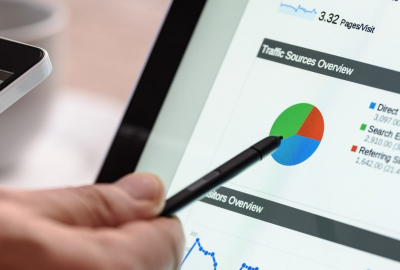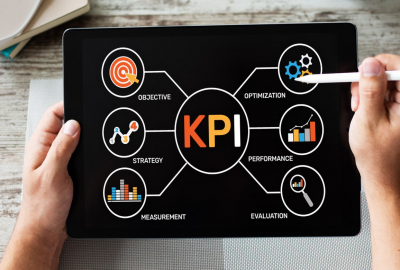Though both UI design and UX became mundane tech terms in the 1990s, their history goes back even further.
On a philosophical level, it’s possible to draw parallels between the Chinese pioneering interior designing and UX. Remembering users’ convenience, when arranging furniture and planning interiors of houses and palaces, is an archaic example of UX design.
Fast forward 6000 years later, Walt Disney and Steve Jobs massacred mediocrity by leveraging user experience in unimaginable ways. Both gave empathy a marketing context, with users becoming the hero while the product becomes their emphatic, helpful sidekick.
“Get closer than ever to your customers. So close that you tell them what they need well before they realize it themselves.” -Steve Jobs
As a result, these men gave us some of the most satisfying, safe and efficient products, and in turn experiences, in their respective markets.
However, even in 2020, users (96%) say they wander into websites that act upon their mobiles, meaning, their content isn’t optimised for smartphones.
Exploring UI and UX opportunities for growth, open up digital marketing fronts such as product innovation, SEO, inbound marketing, content strategy and voice search to mention a few.
What is UX in Digital Marketing?
User experience or UX in digital marketing, as the name suggests, is the “comprehensive experience of a person when using a product, system or service.”
It is the attitude and feelings a user develops when they use the product or service.
Thus, crafting a user experience entails optimising the product or brand experience your users will undergo, resulting in user satisfaction.
UX designers do this by improving the following aspects:
- Usability
- Accessibility
- Pleasure
In digital marketing, UX is the experiences, sensations and feelings users develop when interacting with digital marketing touchpoint- landing pages, content and mobile apps.
Some examples are:
- Accessibility of information on your website
- Load speeds
- Ad placements
- Purchase processes
- Personalised content
- Ease of access
- Brand voice and tone
- The appropriate content for search intent
- Gamification
UX design fine-tunes many digital marketing aspects such as SEO, website’s information architecture, satisfying user intent, advertising and content strategy. In turn, this brings about revenue profits and upgraded brand experience.
What You Should Know When Optimising For User Experience?
One of the major digital marketing mistakes businesses make while optimising UX is that they focus on conversions, SEO and profit. Such an approach blinds them by not enhancing the above three facets.
UX design has existed since the invention of a desk and a chair.
Contrary to popular perception, UX design is never an all-digital concept. It is only about elevating ease-of-use and the kind of experience the user gets when interacting with the (digital or non-digital) product or service.
Is UX Design Dying?
Hey, did you know that Skype is the most used video calling/conferencing tool right now?
You probably don’t. Because, news flash, Skype isn’t!
In the new normal, workforces are increasingly reliant on offshore technologies and platforms to connect.
But how did new entrant Zoom overtake good ol’ Skype to become the most used video conferencing software?
Skype is a classic case of big brands messing up UX to the bone.
UX design requires a sharp understanding of customer’s needs. It’s not about flexing your marketing budget to pack in features that your users don’t even care about.
Even brands that have massive marketing budgets still miserably fail in documenting their user’s journeys and prepping them. Walmart suffered losses amounting to $1.8 million as it didn’t act upon feedback from user experience surveys.
UX design cannot face extinction as it is solely dependent on two evergreen market forces: product innovation and the customer.
To declare user experience design dead is to declare that our capacity to innovate is dead.
What Does The UX Design Process Look Like?
UX designers answer the following questions in their UX design process:
- What steps do the users take to relieve their pain points?
- What tasks do they need to complete?
- How straightforward is their experience while completing these tasks?
- What kind of problems and pain points do users suffer from?
- How can my product solve them?
- What is the user’s journey across the website or product?
- How is the content labelled and organized across a product?
After the UX designer answers these, they build prototypes and wireframes. Eventually, they map out the entire experience users go through.
Then come the UI designers- who turn these prototypes into a visual treat of a reality.
What is UI in Digital Marketing?
UI design or User Interface design is the visual cousin of UX.
By definition, it is the process designers use to build interfaces in software or computerised devices, making the interface visually appealing, interactive and usable.
In digital marketing, user interface design helps in building usable and visually appealing interfaces for digital marketing channels- websites, mobile apps, landing pages, blog pages and wearables.
User Interface designers develop interfaces for three formats:
- Graphic user interfaces
- Voice-controlled interfaces
- Gesture-based interfaces
UI’s Importance in Digital Marketing
So where does UI design fit in digital marketing?
UI’s role in digital marketing is used to leverage branding. Most of your digital marketing branding strategies would be making a pass at efforts to create positive perceptions around your brand.
While a great UX builds brand attributes, UI transfers these attributes to visuals assets such as a website or a mobile app.
Improvements in your website’s UI design can result in an increase in conversions by 200%. In mobile, more users develop a relationship with a company, if the latter sports a responsive, mobile-friendly site.
Planning a great UI involves accommodating these in your digital marketing plans:
- Icons and buttons
- Typography
- Colour palette
- Spacing
- Images
The goal of UI design is to create a spectacle of a website, app, product interface. At the same time, the resulting interface should guide the user to accomplish their task.
UI reinforces brand attributes by creating a visually pleasing experience. Consequently, this increases likeability for your brand.
Importance of Understanding User Experience in Digital Marketing
Digital marketing has a yawning gulf of differences and advantages over traditional marketing but the foundational concept is the same.
Give the customer what they want; products, services experiences, relationships, empathy and pain relievers.
This is what Albert Einstein has in his repertoire from which we can draw inspiration for UX:
“If I had an hour to solve a problem and my life depended on the solution, I would spend the first 55 minutes determining the proper question to ask, for once I know the proper question, I could solve the problem in less than five minutes.” – Albert Einstein
Similar to understanding a problem, you need to be meticulous in understanding the problems and pains your users go through on their purchase journey.
Here is where UX fits in with digital marketing.
Consider every novel or movie made ever. Each one has a hero going on an adventure. They meet people along the way who teach them a thing or two.
Consider your UX designer as the wisdom bearing people in the story. Your job is to help your user (the hero) seamlessly interact with various digital touchpoints (the knowledge givers like Gandalf). These touchpoints can be anything such as content, mobile websites, local SEO packs, flash stores, AR mediums, etc.
By gaining the necessary information and carrying out tasks, they solve their business/ personal problems (the evil in the story) with your product (a magic wand or infinity stones).
Importance of UX by the numbers
So, what happens when you don’t focus on optimising these touchpoints?
The numbers are quite scary, to be honest.
Hear this out:
- 13% of customers say that they will tell about 15 people about their negative brand experiences.
- PWC reveals that about 32% of customers would desert brands for good if they had just one bad branded experience.
Scary, isn’t it?
Talk about selfish customers! Wait, no, don’t!
A bad UX experience shall devastate the way people perceive your brand. UX can make you both the next Coca Cola- a symbol of happiness- or the next Windows 8- a laughing stock.
One of the most important uses of UX is that it can help you differentiate yourself. Building a relationship is the future of marketing.
In the future conversations in social media and online forums will revolve more on your brand and not about your customer.
In such cases, the experiences, the attitudes, the feelings your user develops shall decide customer satisfaction and repeat business over choosing your competition.
So where should you be optimizing your UX?
1) Websites
- Users are 5 times more likely to abandon a website if it offers a poor mobile experience.
- 40% of users shall leave a website if it takes more than 3 seconds to load.
2) Product and Payment pages
- 68% won’t submit a form if they feel invaded by being asked too many personals details.
- 55% won’t submit the form if they sniff out they will be receiving automated emails.
- 52% become repeat buyers if their online shopping experience is accentuated with instantaneous page loads.
3) Mobile
- Poor mobile optimization annoys 48% of users.
- 52% of mobile users who have a bad experience with a mobile version of the website do not engage with the company.
Benefits of UX
To misquote Seth Godin, “Relationship marketing is the only marketing left”. 72% of customers say that they will spread the word to at least 6 people if they have a good experience with the brand.
Users want products, apps and websites to be like Aladdin’s magic lamp. Rub (read tap and scroll) them a few times and it shall give them what they want.
Is it possible?
Totally. Amazon’s 1-click buy? Zoom’s video calling app? Do they ring any bells?
User experience strategies aim at capturing one key resource- the user’s attention. By optimising for attention, UX designers can convert mere interest into revenue and sales.
UX designers can have an impact on
- SEO– By making content findable, accessible and useful as well as adding more relevant pages, they lower bounce and increase the average time spent.
- Advertising– improve ad placement on a website without losing context.
- Website conversion and usability– enhance the usability of the website without hampering aesthetics. They can also make hash, knowledgeable decisions on where to sacrifice beauty and to increase bounty.
Benefits of UI
UI is like that seamless icing on the cake, which is UX.
A poorly designed website cannot compensate for great user experience. Badly designed websites are often conceived as spam.
UI design is all about the look and feel. Neurolinguistics and psychology cite several studies that tell us how typography and colour can persuade the human brain to take action.
Suppose you have the greatest product in the world. Good user interface accentuates your brilliant product and convinces users to believe and buy from your brand.
A working example is the case of Mcafee which cut its support calls by 90% after revamping its software’s user interface design.
Your website’s UI design should one of the cornerstones of your digital marketing plan. When starting or scaling your business with content a good, visually appealing website can retain more visitors.
UX and UI should both go hand in hand. Bad, non-actionable content still sends frowns above your users’ eyebrows regardless of how good the web design is.
ORH Marketing UX/UI Services
Do you have all or any of the UI/UX troubles we mentioned above? ORH marketing is one of the most emphatic marketing agencies. We do not move a needle unless we fully understand your target market.
Once we do, we craft the most amazing brand experiences.
Our UI and UX designers have turned the fortunes of several businesses elevating their brand’s attributes.
If you need more tips on UI/UX design, we are happy to help.
Conclusion
UX and UI are exactly as the name suggests, yet both have their differences.
Customers these days don’t buy products. They buy experiences. Each piece of content you disseminate is an experience in the offing.
Optimise it. Brand it. Sell it.






